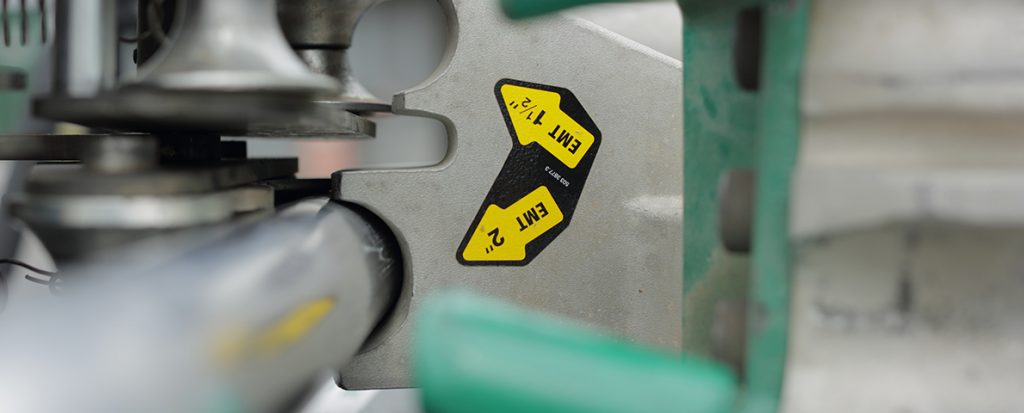When it comes to pulling wire through EMT, PullEase™ makes it easier than ever before. American Conduit’s introduction of PullEase™ aluminum EMT to the market has changed installations for the better, offering unprecedented efficiency and convenience. It slashes the amount of time the typical installation takes, helping companies save on materials and labor.
The Disadvantages of Lubricating EMT
 PullEase™ makes having to lubricate EMT a thing of the past. Here are a few reasons why lubrication is a major hassle.
PullEase™ makes having to lubricate EMT a thing of the past. Here are a few reasons why lubrication is a major hassle.
- Increased cost – Lubricants can be expensive and must be purchased and applied before pulling wire through the EMT. This can increase the cost of the overall installation process.
- Messiness – Having to apply lubricant is a messy process and can leave a residue that is difficult to clean up. This can make the installation process more time-consuming and labor-intensive.
- Lack of control over lubricant application – Lubricants can be difficult to control and may not be applied evenly to the EMT. This can make it more difficult to pull the wire through the EMT and can increase the risk of damage to the wire.
- Environmental concerns – Some lubricants may contain harmful chemicals that can harm the environment. This can be a concern if the installation is taking place in an environmentally sensitive area.
- Risk of damage to wire – In some instances, lubricants can increase the risk of damage to the wire being pulled through the EMT. If the lubricant is not applied evenly or if too much is used, it can cause the wire to become damaged or frayed.
- Compatibility issues – Not all lubricants are compatible with all types of wire or EMT. It’s important to ensure that the lubricant is compatible with the wire and EMT being used to avoid damage or other problems.
Not Only More Convenient, But Safer as Well
Aluminum is a non-sparking metal, meaning it does not produce sparks when struck, cut, or otherwise manipulated. This property is important in environments with flammable or explosive materials, as sparks can cause fires or explosions.
There are a few reasons why aluminum doesn’t spark:
- Low ignition point – The ignition point of aluminum is relatively low, which means that it does not generate the high temperatures needed to produce sparks.
- Lack of carbon content – Unlike steel, which contains carbon, aluminum doesn’t have any carbon content. Carbon is a key component in steel that can react with oxygen to produce sparks.
- Oxide layer – Aluminum naturally forms a thin oxide layer on its surface that helps to prevent sparks from being generated.
- Ductility – Aluminum is a ductile metal, which means it can bend and deform without breaking. When aluminum is struck or cut, it deforms rather than breaking, which helps to prevent sparks from being produced.
It’s important to note that while aluminum is considered a non-sparking metal, it’s not entirely spark-proof. Sparks can be generated in certain conditions, such as cutting aluminum with a saw. Therefore, choosing the right tools and techniques is essential when working with aluminum in potentially hazardous environments.
We’d love to tell you more about pulling wire through EMT with PullEase™ makes it easier. Contact American Conduit online or call 1 (800) 334-6825.

